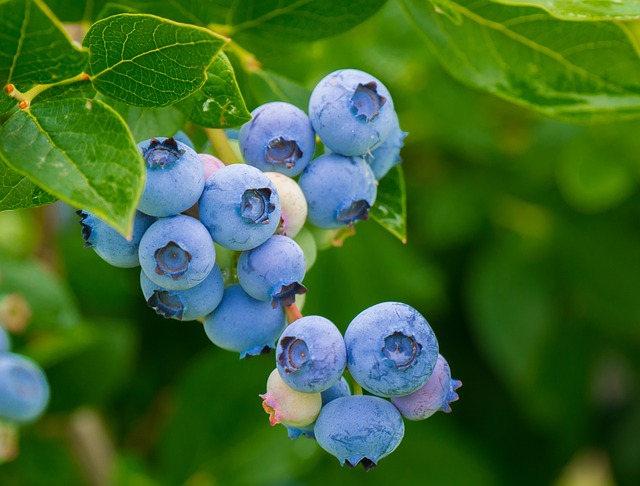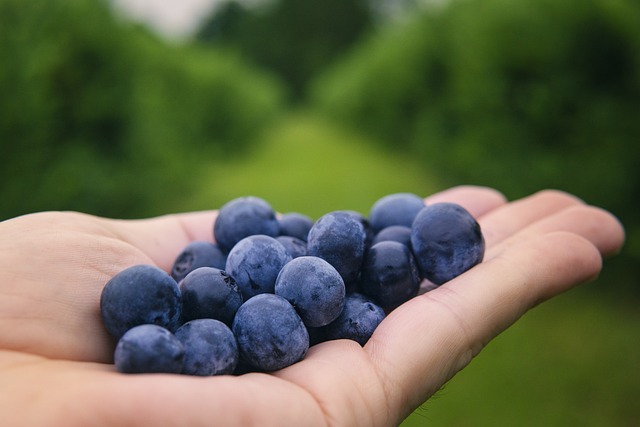Blueberries are not only delicious but also packed with nutrients and antioxidants. Growing your own blueberry plants can be a rewarding experience, but it requires understanding their specific needs to ensure a bountiful harvest. Here’s a detailed guide on how to care for your blueberry plants.
Choosing the Right Variety
Before you start, it’s important to choose the right blueberry variety for your climate. Blueberries are generally divided into three types:
Highbush: Best for cooler climates, commonly grown in the northern U.S. and Canada.
Rabbiteye: Thrive in the southern U.S. due to their heat tolerance.
Lowbush: Ideal for very cold climates and often found in the northeastern U.S. and Canada.
Site Selection and Soil Preparation
Sunlight: Blueberries require full sun, at least 6-8 hours a day, to produce the best fruit.
Soil: Blueberries thrive in well-drained, acidic soil with a pH of 4.5 to 5.5. Conduct a soil test to determine the pH and amend it if necessary using sulfur or peat moss.
Spacing: Space plants 4-5 feet apart, with rows 8-10 feet apart to allow for growth and easy access for maintenance.
Planting
Timing: Plant blueberries in early spring or late fall when the plants are dormant.
Planting Depth: Dig a hole twice as wide and as deep as the root ball. Place the plant in the hole and cover the roots with soil, ensuring the crown is at soil level.
Mulching: Apply a 2-4 inch layer of mulch around the base of the plant to retain moisture, suppress weeds, and maintain soil acidity. Pine bark or needles work well for blueberries.

Watering
Consistent Moisture: Blueberries have shallow roots and require consistent moisture. Water the plants deeply once or twice a week, ensuring the soil remains moist but not waterlogged.
Drip Irrigation: Using drip irrigation or soaker hoses can help provide even moisture and reduce the risk of fungal diseases.
Fertilizing
Acidic Fertilizer: Use a fertilizer formulated for acid-loving plants, such as those used for azaleas or rhododendrons.
Timing: Fertilize in early spring as the plants start to grow and again after harvest. Avoid over-fertilizing, which can lead to excessive vegetative growth and poor fruit production.
Pruning
Timing: Prune blueberry plants in late winter or early spring before new growth begins.
Method: Remove any dead, damaged, or diseased wood. Thin out weak, spindly shoots and cut back older canes to encourage new growth. Aim to maintain a balance of old and new canes.
Pest and Disease Management
Common Pests: Birds, aphids, and blueberry maggots are common pests. Use bird netting to protect fruit and monitor plants regularly for insect infestations.
Diseases: Blueberries can be susceptible to fungal diseases such as powdery mildew and root rot. Ensure good air circulation by proper spacing and pruning. Avoid overhead watering to reduce the risk of fungal infections.
Harvesting
Timing: Blueberries are typically ready for harvest in mid to late summer. Berries should be fully blue and easily come off the plant when gently pulled.
Frequency: Pick berries every few days as they ripen to ensure the best quality fruit.
Winter Care
Mulching: Add an extra layer of mulch around the base of the plant to protect the roots from freezing temperatures.
Pruning: Conduct any necessary pruning during the dormant season to prepare the plants for vigorous growth in the spring.
Growing blueberries can be a fulfilling endeavor with the right care and attention. By selecting the appropriate variety, preparing the soil, and following best practices for watering, fertilizing, and pruning, you can enjoy a bountiful harvest of these nutritious berries. With proper pest and disease management, your blueberry plants will thrive and produce fruit for many years to come.

Propagation
Methods: Blueberries can be propagated through cuttings or division. Softwood cuttings, taken in late spring or early summer, root readily. Hardwood cuttings can be taken in late winter.
Process: For softwood cuttings, select healthy, vigorous shoots and cut 4-6 inch sections. Dip the cut end in rooting hormone and plant in a well-draining potting mix. Keep the soil moist and place the cuttings in a warm, humid environment until roots develop.
Container Growing
Container Choice: If space is limited, blueberries can be grown in containers. Choose a large pot (at least 18 inches in diameter) with good drainage.
Soil: Use an acidic potting mix, such as one formulated for azaleas or rhododendrons.
Care: Container-grown blueberries need more frequent watering and fertilizing. Ensure the plants receive at least 6-8 hours of sunlight daily.
Companion Planting
Beneficial Plants: Consider planting companion plants that can benefit blueberries. Plants like azaleas and rhododendrons thrive in similar acidic soil conditions.
Avoid Competition: Avoid planting blueberries near trees or large shrubs that might compete for nutrients and water.
Troubleshooting Common Issues
Poor Fruit Set: Ensure proper pollination by planting multiple blueberry bushes to encourage cross-pollination. Also, ensure that plants receive adequate sunlight and water.
Yellow Leaves: Yellowing leaves can indicate a nutrient deficiency, often iron. Check soil pH and amend if necessary. Fertilize with an acidic fertilizer that includes micronutrients.
Stunted Growth: This can be due to improper soil pH, inadequate watering, or poor drainage. Conduct a soil test and adjust as needed. Ensure consistent moisture and avoid waterlogged soil.
Seasonal Care Tips
Spring:
Apply mulch and fertilizer.
Prune if not done in late winter.
Ensure consistent watering as new growth begins.
Summer:
Harvest ripe berries regularly.
Monitor for pests and diseases.
Continue watering deeply and consistently.
Fall:
Reduce watering as the plants enter dormancy.
Apply a final layer of mulch to protect roots.
Winter:
Prune old and damaged canes.
Protect plants with an extra layer of mulch in colder regions.
Monitor for winter damage and prepare for spring growth.
Growing blueberries can be a rewarding experience with careful attention to their specific needs. By understanding the requirements for soil, water, sunlight, and seasonal care, you can enjoy a healthy and productive blueberry harvest. Remember to monitor for pests and diseases, and provide the necessary nutrients and care throughout the growing season. With proper planning and maintenance, your blueberry plants will thrive and provide delicious, nutritious fruit for many years.






